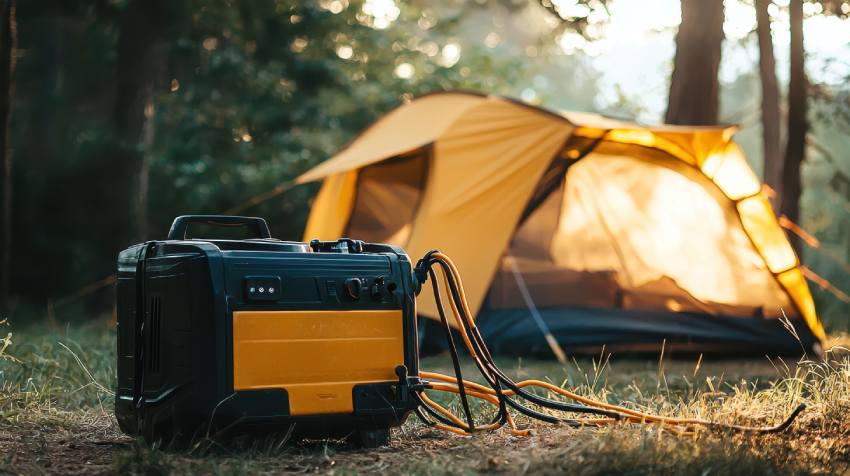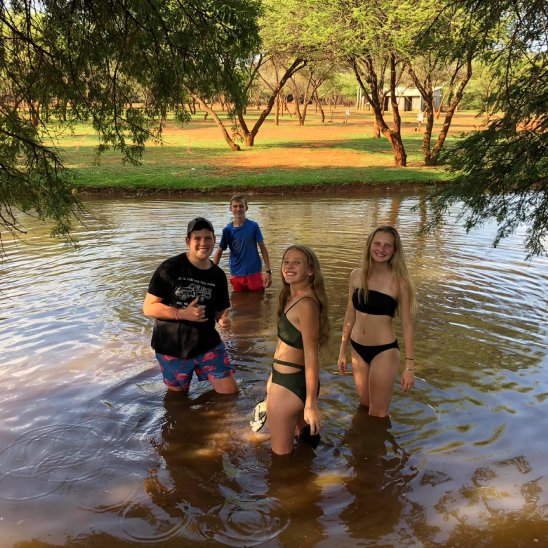Best Power Inverter for Camping: Buyer’s Guide
Looking for the best power inverter for camping? Prepare to enter a world where every manufacturer claims their product is “essential” and every review sounds like it was written by someone who’s never actually been camping. Here’s what they won’t tell you: most camping power needs are embarrassingly simple, but the industry has convinced everyone they need to become electrical engineers to charge their phones in the bush. Whether you’re staying at our caravan park with a proper electrical connection or roughing it elsewhere, understanding inverters might save you from buying expensive solutions to problems you don’t have.
What is an Inverter Used For?
An inverter converts 12V DC power (from your car battery) into 230V AC power (what your wall outlets provide). Think of it as a translator between your car’s electrical system and your coffee maker’s expectations. Without this translation, your morning caffeine ritual remains tragically out of reach.
Here’s where it gets annoying: inverters come in different flavours, and the marketing around them is deliberately confusing. “Pure sine wave” inverters produce clean power identical to your home electricity. “Modified sine wave” inverters produce a choppy approximation that works fine for most things but sounds scary when described.
The dirty secret? Most camping gear doesn’t care about power quality. Your phone charger, laptop, and LED lights work perfectly well with modified sine wave power, despite what premium product marketing wants you to believe. Save your money unless you’re running sensitive medical equipment or high-end audio gear (and if you’re bringing high-end audio gear camping, we need to talk).
A “300W” inverter often can’t run 300W continuously—it might handle 200W comfortably for extended periods. They list peak power (what it can handle for a few seconds) rather than continuous power (what matters), creating unrealistic expectations and frustrated customers.
Why Do You Need an Inverter While Camping?
Honest answer? You might not need one at all. Our caravan park provides electrical hookups, and our chalets come with proper power outlets. But inverters become useful for specific situations that standard camping setups can’t handle.
Remote camping scenarios benefit most from inverters. If you’re exploring areas beyond civilised facilities or taking day trips where you can’t plug into mains power, an inverter lets you run small appliances from your vehicle. Just don’t expect miracles—your car battery wasn’t designed to power a household.
Emergency backup power sounds practical until you realise most “emergencies” involve power outages that also affect fuel stations, making your car-dependent backup plan somewhat circular. Still, an inverter connected to your car battery can keep essential devices running during outages, assuming you remember never to run your engine in enclosed spaces.
Convenience applications make camping more comfortable, but raise the question: do you need these conveniences, or do you just want them? Running a small fan, charging multiple devices, or powering a portable fridge can enhance your experience, but they also tether you to power management rather than freeing you from it.
The environmental impact deserves mention. Inverters waste about 10-15% of battery power during conversion, plus whatever your car’s alternator burns to recharge the battery. For eco-conscious campers, minimising power consumption might align better with outdoor experiences than maximising electrical convenience.
How To Choose an Inverter
Choosing an inverter starts with an honest assessment of your actual needs versus your imagined needs. Most people dramatically overestimate their power requirements, then buy oversized inverters that drain batteries faster and cost more than necessary.
List every device you plan to power and add up their wattage requirements. Most people discover they need far less power than they thought. A phone charger uses 10-20W, laptops typically need 60-90W, and LED lights consume 10-30W. Unless you’re planning to run power tools or kitchen appliances, a modest inverter handles most camping needs.
Wattage calculations get tricky with startup power versus running power. Motors and compressors draw significantly more power when starting than when running. A small fridge might run on 100W but needs 300W to start. Factor in these startup surges, or prepare for disappointing performance and blown fuses.
Build quality varies enormously, and price doesn’t always indicate quality. Cheap inverters often fail quickly, overheat easily, or produce dirty power that damages connected devices. Spending slightly more on reputable brands like Victron, AIMS, or Renogy typically provides better reliability, but don’t assume expensive automatically means better.
Safety features shouldn’t be optional, but many budget inverters skip them to hit price points. Look for overload protection, overheat protection, low voltage disconnect, and proper fusing. These features prevent damage to your inverter, devices, and potentially your vehicle’s electrical system.
What Size Inverter Do I Need for Camping?
Most camping applications work well with 300-600W inverters, despite marketing pressure to buy larger units. A 300W inverter handles phone charging, laptop use, LED lighting, and small fans comfortably. A 600W unit adds capacity for small appliances like coffee makers or portable fridges.
Here’s the reality check: your battery capacity limits inverter usefulness more than inverter size. A massive 2000W inverter connected to a standard car battery will drain it quickly and potentially damage the battery. Match inverter capacity to available battery power for sustainable operation, not maximum theoretical load.
Usage patterns affect sizing more than peak power requirements. Running a 1000W coffee maker for five minutes impacts your battery differently than running a 100W fan all night. Brief high-power use is often more manageable than continuous moderate loads, but most people plan for the opposite scenario.
Consider growth potential but avoid dramatic oversizing. Buying slightly more capacity than currently needed makes sense for future flexibility. Purchasing a 2000W inverter for phone charging wastes money and creates unnecessary complexity in your electrical system.
Battery type and capacity determine realistic inverter performance more than inverter specifications. Lead-acid batteries shouldn’t be discharged below 50% capacity for longevity, effectively halving your usable power. Lithium batteries allow deeper discharge but cost significantly more upfront.
Book Your Stay and Skip the Electrical Engineering Degree
Power management becomes much simpler when you choose accommodation designed for comfort rather than survivalism. Mbizi Game Lodge & Spa provides reliable electrical infrastructure that eliminates most inverter needs while still allowing you to enjoy authentic bushveld experiences. Whether you choose our well-equipped caravan sites or comfortable chalets, you’ll have access to proper power without the complexity of managing your electrical systems. Sometimes the best power inverter for camping is the one you don’t need because you’ve chosen accommodation that handles the technical details, leaving you free to focus on why you came to the bush in the first place. Contact us to learn more about our facilities and book your hassle-free bushveld getaway.














